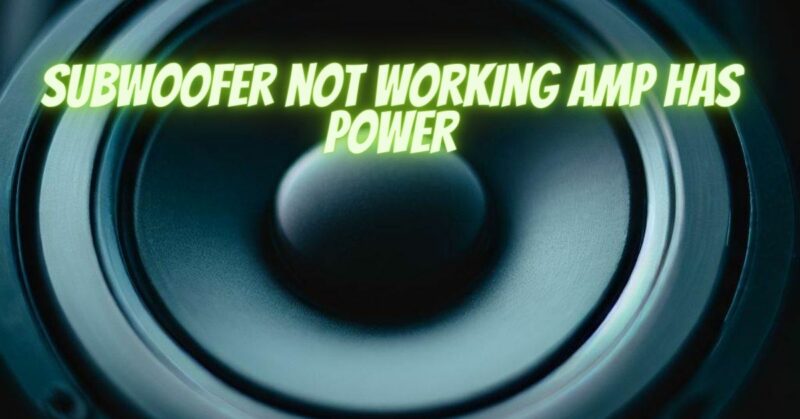Experiencing a situation where your subwoofer is not working despite the amplifier having power can be frustrating. A subwoofer plays a crucial role in delivering deep and powerful bass frequencies, so it’s essential to address this issue promptly. There are several potential causes for a subwoofer not working even when the amplifier is powered on. In this article, we will explore common reasons for this problem and provide troubleshooting steps to help you identify and resolve the issue, allowing you to enjoy the full potential of your subwoofer.
- Check the Subwoofer Power:
Ensure that the subwoofer is receiving power by checking its power cable connection. Verify that the power cable is securely plugged into an active power outlet. If the subwoofer has a power switch, make sure it is turned on. Additionally, check any indicator lights on the subwoofer to see if they are illuminated.
- Verify the Signal Connection:
Double-check the signal connection between the amplifier and the subwoofer. If your subwoofer is powered by a dedicated subwoofer output on the amplifier, ensure that the cable is firmly connected at both ends. If you are using speaker-level connections, ensure that the speaker wires are properly connected to the subwoofer and the corresponding amplifier terminals.
- Review the Subwoofer Input Settings:
Some subwoofers have input selection switches or buttons that determine which input source is active. Make sure the correct input source is selected. For example, if you are using the line-level input, ensure that it is selected rather than the speaker-level input. Refer to the subwoofer’s manual for specific instructions on input selection.
- Check the Amplifier Settings:
Examine the amplifier’s settings to ensure that the subwoofer output is enabled and properly configured. Confirm that the subwoofer output is not muted or set to a very low level. Adjust the subwoofer output level or volume control on the amplifier to an appropriate level to allow the subwoofer to produce sound.
- Test with Another Audio Source:
Connect a different audio source, such as a different music player or another device, to the amplifier and see if the subwoofer responds. This step helps determine whether the issue lies with the amplifier or the original audio source.
- Inspect Subwoofer Wiring:
Check the wiring between the subwoofer and the amplifier for any loose or damaged connections. Ensure that the wiring is securely attached to both the subwoofer and the amplifier terminals. If necessary, replace the wiring to eliminate any potential issues.
- Consult a Professional:
If the above steps do not resolve the problem, it may be best to consult a professional audio technician. They have the expertise to diagnose more complex issues and can provide specialized guidance based on your specific setup.
Conclusion:
When your subwoofer fails to work despite the amplifier having power, it can be frustrating. By following the troubleshooting steps outlined in this article, you can identify and address the potential causes of this issue. Check the subwoofer power connection, verify the signal connection, review input settings, ensure proper amplifier settings, test with another audio source, and inspect subwoofer wiring. If necessary, seek professional assistance for further diagnosis and resolution. Enjoy the full potential of your subwoofer’s deep bass capabilities and enhance your audio experience.


